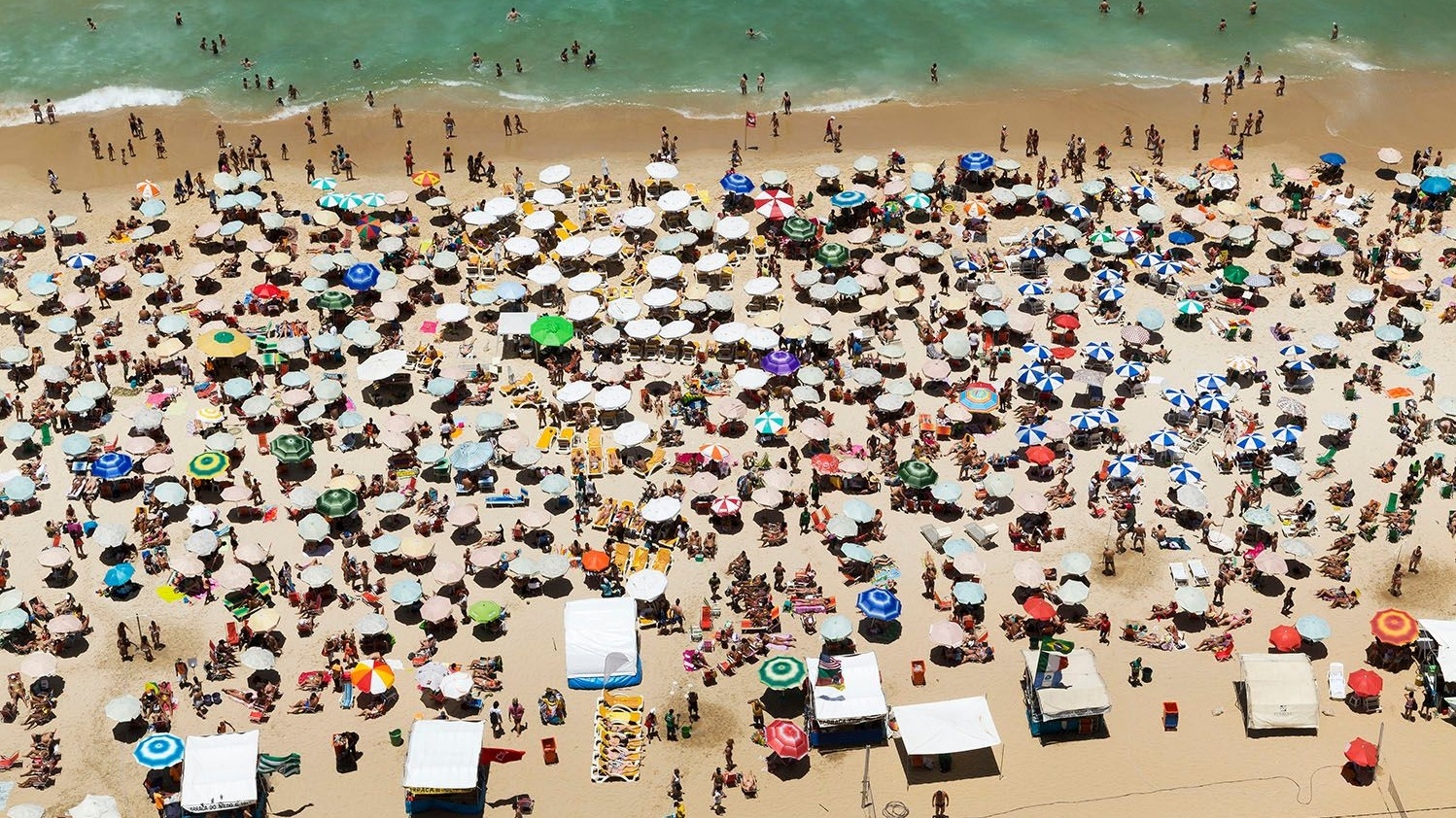Last month, just as Independence Day ended elsewhere in the country, residents of North Goa’s Anjuna began their own walk to freedom. Around 30 locals marched to the village police station to protest the high-decibel music played at the area’s clubs and live music venues that primarily cater to tourists. “We’ve had enough,” said Dr Inacio Fernandes, a general practitioner. “People are having to take sleeping pills. Our children can’t focus on their studies. There’s no peace.” What started that night has mushroomed into a civic campaign involving hundreds of residents, both from Anjuna and neighbouring Vagator, against the mismanagement of tourism.
In Panaji, locals such as journalist Chryselle D’Silva Dias are reporting other examples of tourism malaise. “We have drunk men who exit the casinos on the Mandovi and camp on our doorstep,” says the resident of the Latin Quarter, Fontainhas. “When we ask them to move, they get violent. It’s a real problem.” Then there are the multitudes who insist on using the area’s heritage homes as backdrops for their next Instagram post. “They have no respect for our privacy. They set up big lights, block the roads. Even when we tell them not to, they ignore us and go on.”
I’m reminded of the anti-tourism protests by locals across Europe earlier this year, in Spain, the Netherlands, and Greece. Even in India, it’s not just Goa; across the country, popular destinations, from Leh to Wayanad to Darjeeling, are witnessing the downside of excessive tourism, which is often described as too many people visiting the same place at the same time. Goa, for example, is a tiny state with a population of about 1.46 million that, in 2022, got more than 7 million domestic tourists. In comparison, at its pre-pandemic high, the number of international tourists coming to Goa was pegged at just about 9,30,000. Pan-India, according to the Ministry of Tourism, the number of visits by foreigners in 2023 was counted at 9.24 million. Domestic travellers, on the other hand, made a mind-boggling 1.7 billion trips around the country in 2022.
The meteoric rise of travel in the past decade has resulted in organic and unplanned development of tourist housing and facilities to entertain them. “We haven’t created the kind of [organised] infrastructure needed in places that see huge number of tourists,” says Gopinath Parayil, a disaster management specialist and founder of responsible tourism company, The Blue Yonder. “In most [touristy] destinations, there is no proper public transportation, no toilets or garbage bins for visitors to use.” As a result, tourism is now adversely impacting the daily lives of local communities. You’ve probably experienced traffic gridlocks in Mussoorie and Dharamsala. Seen the mountains of garbage as you enter Manali or exit Ooty. And noticed the plastic bottles and biscuit wrappers scratching non-biodegradable ‘We were heres’ into riversides and hillslopes, be it in Coonoor, Pahalgam, or Mahabaleshwar.
In an age where climate change is impacting weather patterns, excess tourism is putting pressure on public resources such as drinking water, especially in destinations like Shimla and the Nilgiris, which are seeing both heat waves and acute water scarcity. “Local communities have themselves played a role in all this,” warns Pradeep Murthy, a Wayanad local who runs a responsible tourism company called Muddy Boots Vacations. “In the beginning, everybody loves tourism because it brings economic benefits to people.” Think of how, in the hope of benefiting from the influx of visitors, local communities’ first response is to build accommodation, create tourism-related services such as restaurants, transport, and activities. The problem is that historically, in India, all this development has been allowed to happen with barely any regulation and thought as to managing the long-term consequences, including on their own lives. And eventually, as Murthy says, “when it grows uncontrolled, then the problems surface. Today in Wayanad, land rates are astronomical. Locals can’t afford it; they can’t buy at the rates that an investor can. What is a local to do?”
We need to understand data
Carrying capacity refers to the maximum number of people that can visit a destination at the same time without causing damage to its environment, people and the visitor experience. But, says journalist Soity Banerjee, who’s reported extensively on responsible and sustainable tourism initiatives, “we don’t have clear models of how to arrive at carrying capacity.” First, we need to assess the real impact of tourism, and that can be done by tracking data such as sharp increases in land pricing over short periods; the number of permits being handed out for tourism-related projects in specific areas in a short time span; deforestation, construction of highways and airports, and cost of living spikes. “When we examine parameters like these, they will give us clues to act on before it’s too late,” says Murthy, who has helped frame responsible tourism-related regulations for government bodies, including Kerala’s tourism board as well as for the Bureau of Indian Standards.
Developing and promoting new sites and diverting tourist traffic to them can help ease the pressure on existing locations, according to experts. To achieve this, they suggest studies be conducted on who’s drawn to a location and why. This data should then be used to influence tourist movement. “99 per cent of people who visit Wayanad want a ‘forest-like’ experience. They actually don’t want to experience a forest. So, it’s pointless letting them into a biodiversity hotspot,” says Murthy. “Instead, we can develop trails across tea plantations where people can have their ‘forest-like’ experience, leaving the real forests to be experienced by those who are genuinely interested.”
This has international precedent—tourism authorities in Denmark and the Netherlands, for example, are experimenting with an AI-based concierge tool Travel With Zoey to guide visitors to destinations that might not appear high up in search engine results.
Another way, say a number of responsible tourism advocates, is to ration access to a popular destination through online reservations and by limiting the number of visitors who can be present at a location simultaneously. It’s a practice that has had reasonable success at venues like France’s Palace of Versailles. For wildlife and biodiverse destinations, their suggestion is to grant access in rotation, so that the destinations too have time to recover from footfalls. Karnataka, for instance, already regulates trekking on 23 routes across the state. And the government has announced it will limit access to even more routes after footage of crowds seeking entry to the arduous Kumara Parvatha trekking route went viral in early 2023.
Recommendations also include spreading arrivals across seasons and creating better tourist infrastructure. There’s a need to also create “depth” in tourism offerings, says Banerjee. “When we say diversifying, we are telling people to go to a new destination. But you are not telling the residents of that destination how to deal with this sudden surge of people and what to do with them,” she points out. “You have to ensure that there are things for tourists to do. Train locals in activities besides owning hotels and homestays—making souvenirs, conducting cooking lessons, nature walks, heritage and culture tours. Otherwise, the risk is that the tourist will dictate what kind of tourism happens there.”
Tourism of, for and by the people
The key to better tourism, experts insist, lies in empowering locals. “We have to involve the local community in decision making. We have to ask them first and foremost if they even want tourism,” says Parayil. He adds, “For example, we sign MoUs with panchayats in the areas we work in. SOPs are then created on how tourism should be conducted in their area. We ask questions like how many tourists we can bring in a day. Where can we take them and what kind of activities are okay to do? This helps the panchayat think and decide how to operate with other travel operators as well.”
It’s a model that can be replicated in urban centres, too, Parayil insists, by involving community leaders, NGOs, and self-help groups who “might give you better ideas than you can think of”. Banerjee adds, “We have historically treated our guests well (atithi devo bhava), but we have to empower the locals enough for them to be able to say no, the tourist is not god and this is where we draw the line.”
A case study worth replicating, the experts point out, is the rural tourism project of Sarmoli, a village in Uttarakhand. Here, villagers collectively run homestays and hotels, organise cultural festivals, and offer visitors experiences, including birding, nature walks, musical storytelling, and cooking lessons, that are rooted in the area’s history and heritage. They also manage the conservation of natural resources and have the final say in shaping tourism in this biodiverse region. As Raj Basu, a responsible tourism evangelist, explains it, this model “re-examines the relationship between the host and the guest, the destination and tourism.” Basu is the founder of HELP Tourism, a company that not only puts together immersive itineraries, but also works with private and public players across eastern and Northeast India on developing tourism responsibly. He adds, “A hotel room is tangible, but the beliefs, habits, and customs of the people who live around the hotel are intangible. We have to create a balance between the two.”
Changing the equation
“We have to stop selling tourism like a product,” Basu says emphatically. “Because when you buy a product, you think you have ownership of it. You land up at the destination and behave like you own it. If I visit your home, your rules apply. I cannot walk into your house with my shoes on if it’s not okay with you. We have to explain tourism in the same way for it to be treated with respect.” Banerjee agrees and suggests incentivising tourists to follow the rules of a place and treat it well. Destinations such as Hawaii and Vancouver Island, for instance, offers visitors discounts on retail purchases, exclusive experiences, and even free hotel stays when they sign up for activities like beach clean-ups, afforestation drives, and coral reef rejuvenation programmes. “There’s definitely a need to decongest popular destinations,” said Suman Billa, Additional Secretary, Ministry of Tourism, Government of India, speaking at the Indian Heritage Hoteliers Association conference in Tamil Nadu. “We need to create new tourism destinations to relieve the pressure on popular ones, and look at limiting tourism numbers, specially to hill stations like Shimla, which have been adversely impacted,” he said, adding that his team has flagged the issue of excess tourism with multiple Indian states and is currently seeking solutions for it.
“It’s not like we are against tourism,” says Dr Fernandes. “But it should contribute to livelihoods and not adversely impact the lives of locals. Ultimately, empathy needs to be instilled in the minds of tourists; what would they feel like if they were in our shoes?” The solution to tourism’s negatives might well lie in figuring out how to implement the meaning of that word, empathy, and another—respect.






